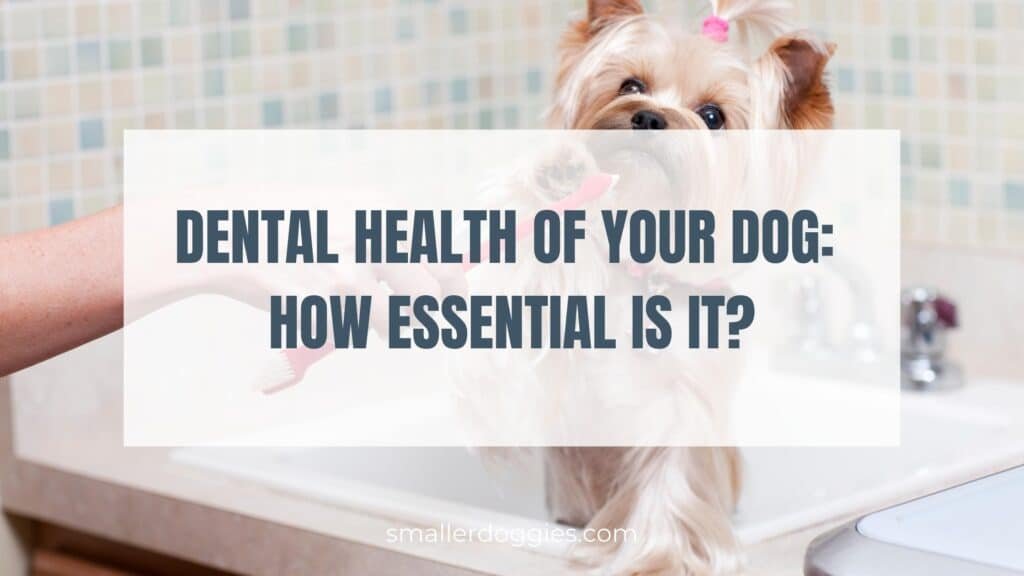Post Disclaimer
This post may contain affiliate links. If you use these links to buy something we earn a commission at no extra cost to you. Smaller Doggies is supported by its audience, Thank you!
When it comes to dogs, your responsibility doesn’t just end with feeding them and taking them out for a walk once a day. There are multiple other concerns that you need to address and things you need to take care of in regards to the dental health of your dog.
Brushing your dog’s teeth is just as important as brushing your own. To prevent tooth decay, gum disease, and tooth loss, you need to brush your dog’s teeth. If neglected, these dental problems can be quite painful and annoying for your canine and over time can lead to more serious problems for your dog.
This is why you need to make sure that you take as good care of them as you possibly can.
Why should you brush your dog’s teeth?
First, over time, the structure of your dog’s teeth can become infected or damaged. This prolonged impact can lead to their tooth falling out. By prioritizing dental health, you are ensuring that the structure does not weaken and stays strong. This way, your canine’s teeth will stay in place, making it easier for them to chew.
We go into detail on how to start brushing your dog’s teeth, What tools you will need, and how often you should be brushing in this article here: Brushing Your Dog’s Teeth: A Quick Guide
Another reason is to prevent bad breath. Cleaning your dog’s teeth can prevent bad odor. If you overlook this responsibility, particles of food cling to the teeth and with time, lead to plaque.
When tartar is left on the teeth, it can lead to inflammation and gum infection. This can lead to gingivitis. It is the first phase of gum disease. After a time, it can also cause a more dangerous and harmful periodontal disease.
Read our guide here on Periodontal Disease In Dogs – Everything you need to know if you would like to know more.
Signs your dog may have dental issues
Dental diseases can cause a lot of discomfort and pain. It can also prevent your dog from eating, leading to malnutrition. A couple of signs that your dog has dental issues include:
• Not eating/drinking
• Drooling
• Bad breath
• Not wanting to use their chew toys
A lot of the time your dog will not even show symptoms that they are developing periodontal disease and they will often show signs when they are in the later stages. This disease when in the later stages is not curable and vet visits and treatments can be quite costly. It is as important for your dog just like it is for us to maintain good oral hygiene.
Frequently Asked Questions
What should my dog’s teeth look like?
Your dog’s teeth should be white, clean, and straight, your dog’s gums should be pinkish in color and moist.
How many teeth do dogs have?
In a dog’s life, like us they will have 2 sets of teeth, puppies will have 28 deciduous teeth (teeth that fall out) and adult dogs have will get 42 permanent teeth.
As you can see, dental health is essential for all living creatures. Your dog’s teeth are important to their well-being and happiness – it’s up to you to make sure they stay healthy! Do your best at brushing them daily with a toothbrush designed specifically for dogs. Make regular trips to the vet so that their mouth stays in good condition for as long as possible. You’ll be glad you did!
What are your views on this? Share in the comments bar below.
